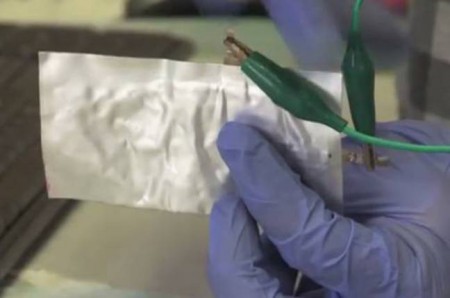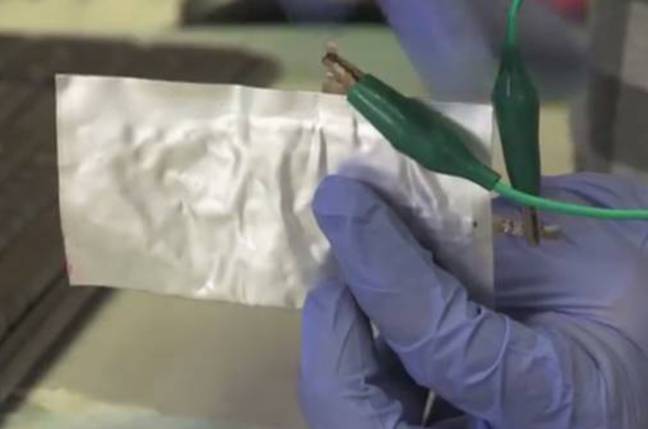April 8, 2015 – Stanford University researchers, publishing in Nature this week, describe a prototype aluminum rechargeable battery that could become the successor to lithium-ion used in laptop, tablet and smartphone technology as well as electric vehicles, and nickel-metal hydride used in many hybrid vehicles.
The battery is lightweight, flexible and recharges in minutes. It is good for up to 7,500 discharges, significantly greater than existing lithium-ion storage technology. The only drawback, it produces about one-half the voltage of a comparable lithium-ion battery by weight. The inventors, however, believe this can be overcome by improving the density of the graphite-foam cathode.
This development could be the breakthrough needed for renewable energy such as wind and solar which need reliable, quick charging, multi-cycle, environmentally friendly energy storage to feed into the grid without the valleys and peaks described in a previous blog.
Right now Tesla and Nissan are in the process of investing in mass manufacturing of battery technology for the next generation of electric vehicles and for homes installing solar panels. The technology of choice is lithium-ion but lithium is more volatile than aluminum. If you don’t believe me just look at the picture below of a Tesla Model S going up in smoke after the battery pack overheated?
That wouldn’t happen with aluminum as one of the inventors, Hongjie Dai, a chemistry professor at Stanford states, “Our new battery won’t catch fire, even if you drill through it.”
How does the battery work? The charge flows from the aluminum metal anode to the graphite-foam cathode through a non-flammable ionic liquid electrolyte. Coulombic efficiency at 98% is about as good as a battery can get representing the fraction of stored charge recoverable during discharge. Recharge rates are as little as one minute which beats lithium-ion by light years, one of the major headaches of current electric vehicle technology. And when you add the number of recharge cycles, 7.5 times greater than current lithium-ion batteries, the aluminum battery becomes even more compelling.
Seen in the image below (courtesy of Iain Thomson), the prototype battery is contained in a flexible polymer pouch. That makes it suitable for almost any form factor and for multiple applications from smartphone and digital cameras to robotics to home battery storage and electric vehicles. The movers and shakers in these industries reading about this invention must be taking notice. So it will be interesting to see just how quickly this Stanford invention moves from the laboratory to commercial application. We’ll be watching and reporting on its progress here.





















